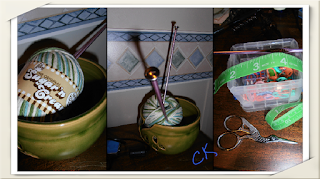I learned to spin about three almost four years ago while I
was living in West Virginia. I was at the very beginning of my I want to learn
textile arts adventure and decided if I was going to learn how to spin I was
going to start at the beginning. This means I started with hand spinning. Now
the hand spindle is the oldest tool and one of the most widely used tool around
the world. Estimated to be over 10,000 years old[i]
it is older than the wheel (3,500 B.C) and was the main source of fiber making
for around 9,000 years. They are found in stories from around the world and are
the tools of Gods as much as the tools of man. The Navajo’s are gifted the
spindle by the spider woman. The Three Fates in Greece spin the threads of life
and weave our stories and cut our thread. They are decorated and are made from
wood, ivory, stone, bone, clay, amber, copper, and the list goes on and on.
Today they are mostly made of wood.
So how does one spin on a hand spindle. Well the easiest way
is to park and draft. Now no matter what your spindle or fiber is this is a
good way to learn and how I was taught. First you need to find your staple. To
do this gently hold your fiber in one hand and gently pull out some fibers from
the top. The length from the top to the bottom is how long (or the staple of)
your fiber and is how far you want to put your hands apart from the top.
Next you want to hook your fiber to your spindle. You can
use a lead string if you like but when I am working with a hand spindle I
prefer to start from the fold. So you take the hook of your spindle and hook a
small amount of yarn and gently pull. When you have a good hold on your fiber
by pitching it where you want the spin to stop, gently spin your spindle in a clock wise movement and let the spindle twist your fiber. To tight it
will break, too lose it will pull apart, it may take a bit to get
this down.
Once you have that slightly spun you have created a leader
and now you can spin your yarn. Holding your spindle, between your knees keep
your right hand in the spot where your worked fibers (yarn) start and unworked
fibers (roving) end. Gently pull some of the fibers apart (draft) sort of
thinning it as you go. When you are happy with that you want to use your left
hand to pinch where the new stuff to be worked starts and your roving ends.
Gently turn the spindle in the same counter clock wise movement. You want to stop your spindle as soon as it
start to slow down and starts back spinning.
Repeat.
When your yarn gets too long take it off the hook and wrap
it around the shaft and re-hook the yarn above.
If your yarn doesn't want to come apart first try putting
your hands further apart. This goes back to the staple length. When you are
pulling it your hands should be that far apart. If that doesn’t work you may
try losing it up with your hands and try again.
If you find that your yarn keeps breaking, you either have
too much twist or your spindle is too heavy for your yarn. Thick yarn can use a
heavier spindle while thin yarn needs a lighter one.
If your yarn is uneven, that is alright, save it and later
after you have spun for a while go back to it and see how you have improved.
 |
| A cool way to wrap your thread to hold it while you rotate it on to the spindal |
Eventually you will naturally start to draft as you spin and
you will no longer need to park and draft as you spin as you draft while you
spin.
Great books to help you learn, Respect the Spindle by Abby Franquemont has and is still very
useful for the novice spinner and the advanced. And Carol Kroll’s The Whole Craft of Spinning was a great
help for me when I started. Handspindles
by Bette Hochberg I stumbled upon a few years ago is great at showing different
techniques with different spindles.















